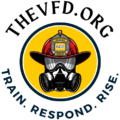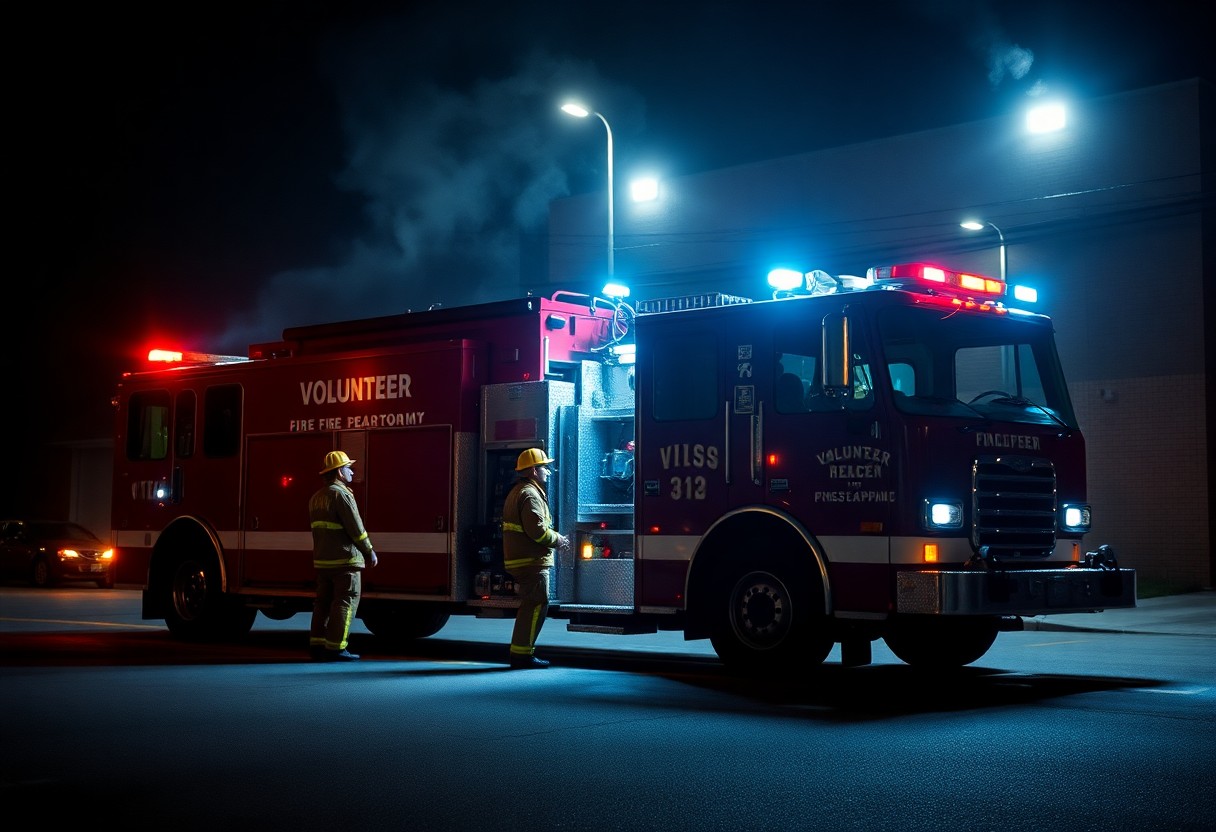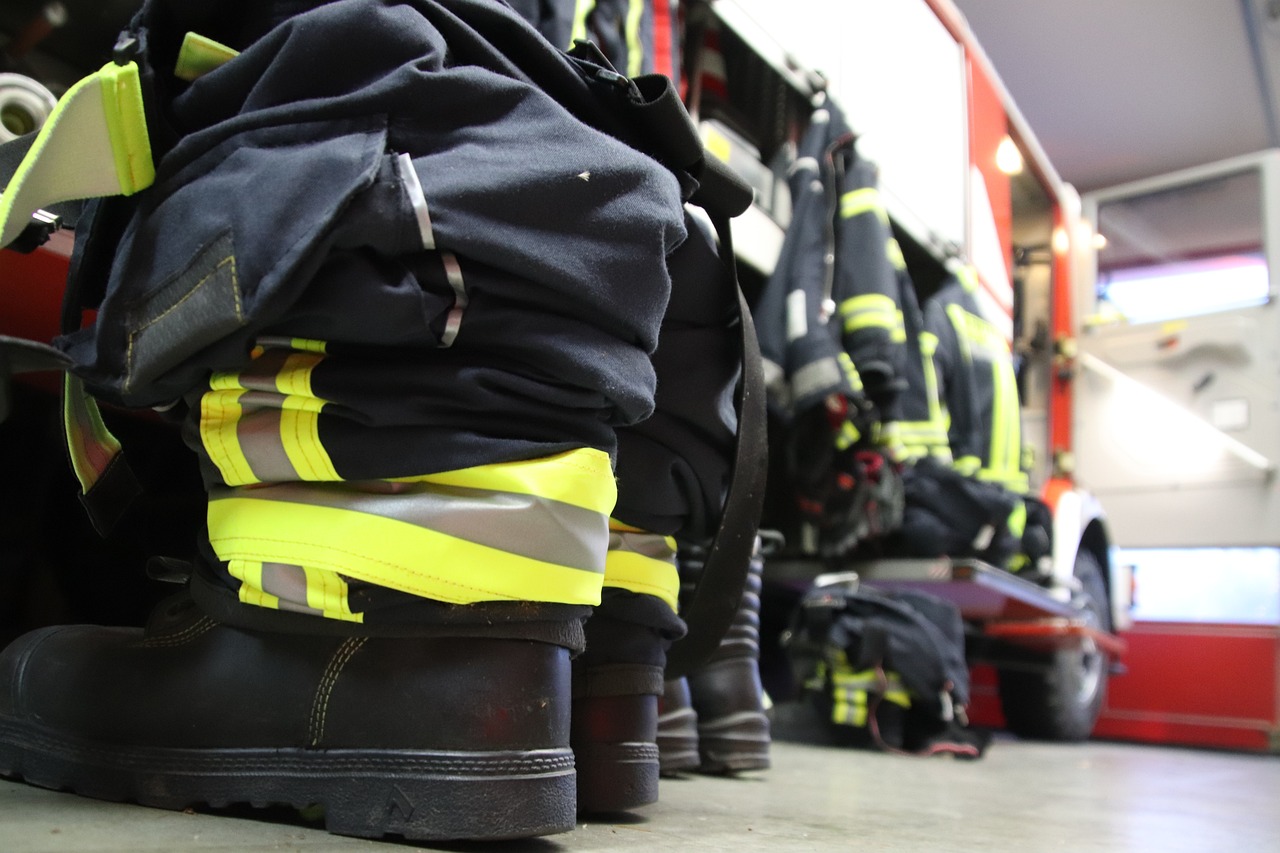It’s crucial for volunteer fire departments to understand how effective scene lighting can significantly enhance safety during emergencies. By implementing proper lighting strategies, you can improve visibility, minimize hazards, and ensure your team operates efficiently in high-pressure situations. In this blog post, you will learn practical tips and techniques to optimize scene lighting, enabling you to create a safer environment for both responders and bystanders. With these insights, your department can better prepare for challenges and execute your mission more effectively.
Importance of Scene Lighting
For volunteer fire departments, optimal scene lighting is important for ensuring safety during emergency situations. Proper lighting allows first responders to navigate scenes quickly and effectively, reducing the likelihood of accidents and enhancing overall operational efficiency. In challenging environments, reliable lighting can make a significant difference in the quality of your response.
Enhancing Visibility
Across any emergency scene, visibility plays a critical role in how effectively you can assess and manage hazards. Adequate lighting ensures that potential dangers, such as downed power lines or unstable structures, are easily identifiable. This allows you and your team to make informed decisions quickly, ultimately fostering a safer environment for both responders and civilians.
Impact on Response Times
Beside enhancing visibility, effective scene lighting significantly influences your response time during emergencies. When you have sufficient light, you can locate victims, discern hazards, and execute your plans without hesitation. This efficiency is not only vital for the well-being of those affected but also for improving overall team coordination.
Importance of timely response cannot be overstated in emergency situations. With appropriate lighting, you can streamline operations, reducing the time spent on assessments and enhancing the speed at which you carry out life-saving measures. Adequate lighting means quicker identification of the scene’s layout, enabling you to move efficiently and regroup easily. The faster you can act, the more lives you can potentially save. Therefore, investing in high-quality scene lighting is not just a matter of comfort; it is an important aspect of effective emergency response.
Types of Lighting Equipment
Clearly, understanding the types of lighting equipment available can significantly enhance safety during emergency operations. Below are common types of lighting solutions used by volunteer fire departments:
| Portable Floodlights | Versatile and easy to set up, providing broad illumination. |
| LED Light Bars | Energy-efficient, long-lasting, and often mounted on vehicles. |
| Scene Lighting Kits | Designed to provide targeted lighting at specific incident zones. |
| Headlamps | Hands-free lighting, ideal for close work or navigating dark areas. |
| Lanterns | Useful for providing localized light in various operational settings. |
Knowing the characteristics of each lighting type can help you make informed choices for optimizing scene safety.
Mobile Lighting Solutions
For effective on-the-go illumination, mobile lighting solutions offer flexibility and ease of use. These typically include portable floodlights, LED light bars, and compact lighting kits that can be quickly deployed as needed. They are especially useful in rapidly changing environments, allowing you to adjust lighting according to the situation.
Fixed Lighting Systems
Lighting systems that are fixed can provide lasting illumination in specific locations. These systems may include permanently installed floodlights or strategically placed light poles that maintain constant visibility at high-risk areas, such as fire stations or training grounds. They are designed to withstand various weather conditions and ensure steady light output during prolonged emergencies.
It’s imperative to integrate fixed lighting systems with your overall safety solutions. These systems can enhance visibility consistently across incident zones, reducing the risk of accidents during night operations. When combined with mobile options, they create a robust lighting strategy that can center on all aspects of scene management. Investing in both systems makes your responses more effective and ensures that visibility is prioritized, no matter the situation.
Best Practices for Scene Setup
There’s no doubt that proper scene setup is imperative for ensuring safety during any emergency response. By optimizing lighting and equipment positions, you can create a more effective operational environment. This not only helps your team navigate the scene efficiently but also minimizes the risk of accidents. Take time to assess the situation and implement best practices to enhance visibility and safety for everyone involved.
Placement Strategies
One effective method for scene lighting is to position lights where they can offer the maximum coverage while reducing shadows. Consider placing lights at various heights and angles, ensuring they illuminate critical areas such as access points and hazards. By doing so, you enhance situational awareness for your team and any bystanders, allowing for a safer response overall.
Coordination with Emergency Equipment
The positioning of your lighting should work in harmony with your emergency equipment for optimal efficacy. Ensure that lights do not obstruct equipment access or line-of-sight for drivers or personnel. This coordination is vital in maintaining a clear path for your team while ensuring they can operate effectively in low-light conditions.
In fact, effective coordination between lighting and emergency equipment not only enhances safety but also speeds up response times. By assessing and planning where lights will be placed in relation to your vehicles, medical gear, and other implements, you can create a seamless operational setup. This allows your team to focus on the tasks at hand without being hindered by poor visibility or obstructed pathways. An organized approach to scene setup fosters confidence among your responders, ultimately leading to better outcomes during critical incidents.
Safety Protocols for Lighting
To ensure the safety of all personnel at the scene, you must develop safety protocols specifically focused on lighting. Proper protocols help mitigate risks associated with inadequate visibility, allowing first responders to work effectively and safely. By implementing these protocols, you can significantly improve situational awareness and minimize accidents, ensuring that everyone involved can perform their duties without unnecessary hazards.
Preventing Glare and Shadows
Before positioning your scene lighting, it’s important to consider how glare and shadows can impair visibility. Overhead lights can create blinding reflections, while improper placement leads to troublesome shadows. Ensure that your lights are strategically placed to reduce glare and avoid casting shadows where critical tasks are performed, enhancing clarity and safety for all responders on scene.
Ensuring Adequate Light Coverage
With your scene properly assessed, you need to prioritize achieving adequate light coverage throughout the area. This means identifying and illuminating all critical zones, particularly those where personnel will operate. By ensuring that every area is well-lit, you foster a more efficient and safer working environment.
A well-planned light coverage strategy can make a significant difference in emergency responses. You should incorporate high-intensity lights that can illuminate large areas while employing additional portable lighting solutions for more focused tasks. This comprehensive approach allows for clear visibility across the scene—reducing blind spots and enabling you and your team to navigate the area effectively and safely.
Training for Fire Department Personnel
Despite the advanced equipment available, the effectiveness of scene lighting relies heavily on the training of fire department personnel. You must incorporate comprehensive training programs that emphasize the operation and adjustment of lighting technologies, enabling you to maximize their utility in various emergency situations. Regular training sessions will build your confidence and competence in utilizing these resources effectively, ensuring safety for both responders and civilians alike.
Overview of Lighting Techniques
Among the various lighting techniques, you need to familiarize yourself with portable lights, floodlights, and scene lights. Understanding the specific applications of each type will equip you to select the most effective lighting solution for different scenarios. This knowledge will not only enhance visibility but also minimize hazards during emergency operations.
Scenario-Based Training Sessions
Fire department personnel should engage in scenario-based training sessions that mimic real-world situations. This practical approach allows you to implement lighting strategies under simulated conditions, ensuring you are prepared for various emergencies.
Overview of scenario-based training sessions enables you to practice deploying lighting equipment in controlled environments that reflect common incidents, such as vehicle accidents or structure fires. You can experiment with lighting techniques and assess their impact on visibility and safety. By analyzing your performance in these scenarios, you gain valuable insights, which can be applied on the job. This hands-on training fosters better decision-making and enhances your ability to act quickly and efficiently during actual emergencies.
Case Studies: Successful Implementation
Not all volunteer fire departments are equal, but many have successfully optimized their scene lighting for enhanced safety. Consider these case studies:
- Department A improved visibility by 75% by utilizing LED floodlights, resulting in a 40% reduction in response time.
- Department B implemented portable lighting units, which led to a 30% decrease in accidents during night operations.
- Department C upgraded to remote-controlled lighting systems, enhancing scene control and ensuring a 50% increase in firefighter safety ratings.
Lessons Learned from Other Departments
At various departments, adopting innovative lighting solutions not only improved safety but also reinforced the importance of training. These case studies showcase the benefits of consistent evaluation and adaptation of lighting strategies to align with evolving operational needs.
Technology Upgrades and Outcomes
At many departments, technology upgrades have transformed operational capabilities and efficiencies. Most notably, the introduction of intelligent lighting systems has allowed for rapid deployment and customizable settings for different incident types.
Due to these upgrades, you can expect significant improvements in visibility and safety on the scene. Departments using smart lighting systems have reported a 60% increase in situational awareness among firefighters. These systems can be adjusted remotely, allowing you to adapt to changing conditions quickly. This not only enhances the safety of your crew but also optimizes the overall effectiveness of your response efforts.
To wrap up
From above, optimizing scene lighting as a volunteer firefighter significantly enhances safety for both responders and civilians. By strategically placing portable lights, leveraging vehicle-mounted systems, and utilizing reflective materials, you can improve visibility in emergency situations. Regular training on lighting protocols and equipment will ensure your team is prepared to deploy effective lighting solutions quickly. Investing time in assessing and enhancing your scene lighting capabilities will create a safer environment when every second matters, ultimately improving the efficiency of your responses during emergencies.



